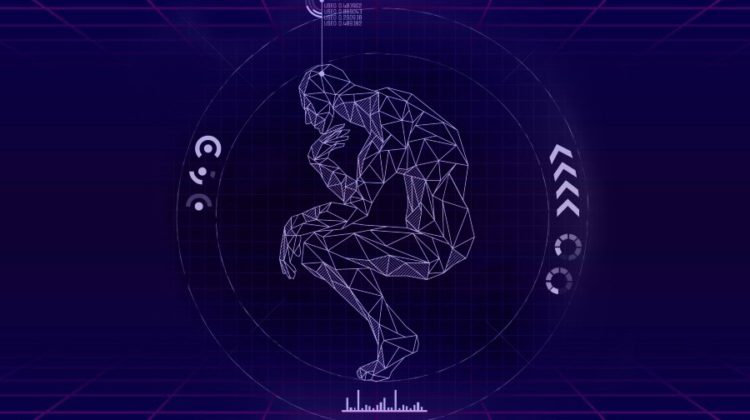
It can help develop new theories by making unexpected connections
The use of artificial intelligence in art is aimed at reproducing and imitating the artist’s work and style, although several creators conceive AI as a creative stimulus.
Surrounded by a black background that contrasts with her immaculate figure, the dancer interacts with visual effects generated by artificial intelligence. No movement is repeated in the show created by the dance and research company, in a space where humans and machines produce a shared world. Faced with those who warn that software will undermine creativity, other voices assure that machines and artists can not only live together but “stimulate each other”.
Some scientists are already calling for a ban on certain uses of this technology, such as emotional recognition systems. Far from the dangerousness of surveillance systems, issues related to art and artificial intelligence revolve around the questioning of creativity and copyright, which we look at with “an anthropocentric bias”.
We must insist on the difference between the general creativity that all humans have to a greater or lesser extent, and creativity reserved for a few, which breaks rules, such as inventing a new pictorial or musical style. Those high levels of creativity are (still) beyond the reach of machines, but also “of the vast majority of humans.” To date, a machine can capture the essence of a style and generate originals, as many human creators do when they enroll in an artistic tradition.
However, great advances are taking place within these two fields of artificial intelligence: machine learning or machine learning in which systems analyze large amounts of data and automatically learn from examples, and deep learning, a step further that involves the use of hierarchical neural networks that, imitating the human brain, transmit information, share it and deepen its complexity.
The Portrait of Edmond Bellamy, the first painting created by artificial intelligence and programmed by the French collective Obvious Art, was auctioned in late 2018 for $ 432,000. A few months later, Ai-Da, an ultra-realistic humanoid, became the first robot in the world to present her own solo exhibition and sold paintings for a total value of 1.12 million euros. The works of both intelligences imitated existing pictorial styles, indistinguishable from the work that any painter could have done.
The machine in itself, autonomously, is one thing, and another in collaboration with humans as an instrument to amplify their creativity, as the computer-created art, can be much more “interesting”.
Artificial intelligence in art is aimed at reproducing works that already exist. For more than ten years artists from Spanish Stocos Institutes (Instituto Stocos) have been using AI models to do new things, generate unexpected choreographic and musical material. The first simulations were with swarm intelligence, a computational model that mimics the behavior of flocks of birds or schools of fish. From that, we generate original music and visuals.
In their show Neural Narratives, AI-generated neural networks create abstract body structures connected to the body, amplifying body presence on stage through holographic projections. In Piano and Dancer, the movements of the dancer are transferred to the piano in real time; they depend on each other to conceive music and new movements. Nor should you be fascinated by the computer. It can help you expand your ideas, not fill your gaps. For a composer, the most fascinating thing in the work with artificial intelligence is the synthesis of sounds, the possibility of creating sounds that have not been heard before.
“I think that imitation is the most boring thing you can do with a computer” says American poet and programmer Allison Parrish in an interview with Vice. “A lot of academic research on creativity in AI focuses on a computer getting what an artist normally does.” She published Articulations in 2018, a collection of poems made from a computer program that extracts linguistic characteristics from more than two million verses in the public domain, and then traces paths between them.
The result is poems with an intuitive coherence that is outside the limits of intentional semantic constraints. She tried to expand the type of interpretations that people can bring to language. Because computers have so few ‘built-in’ ideas about how language works, they make you invent your own language abstractions, and unexpected and beautiful things are accomplished when these abstractions don’t add up.
We can believe that, in the medium term, advances in computational creativity will allow systems to be able to evaluate what they are generating. They will have the self-critical capacity. And the adventure that, in the perhaps not so distant future, most creators will not conceive their creative or artistic work without the use of artificial intelligence. Although thinking about completely replacing the human is absurd, the application of artificial intelligence to art is fundamentally positive, as it will provide new ideas.
